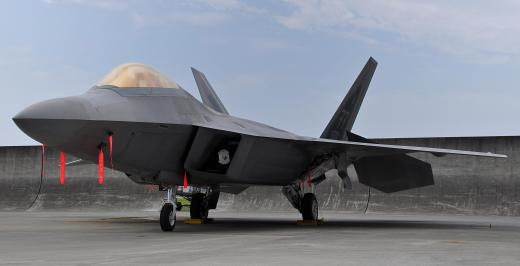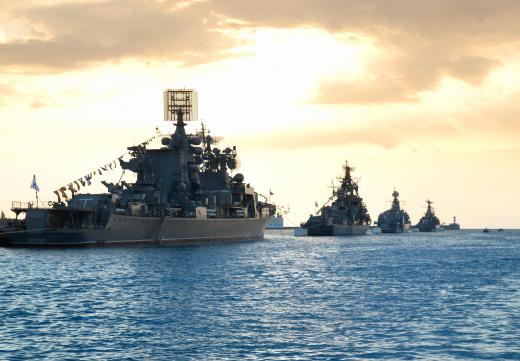What is a Tracking Radar?
 Mary McMahon
Mary McMahon
A tracking radar is a radar device with the capability of tracking a given target. These radars are used for a wide variety of purposes from bird surveys to intelligence gathering and the technology behind it can be highly sophisticated. Radar manufacturers typically offer a range of products with tracking capabilities and it is also possible to design products for specific purposes in the event that generic radar devices are not adequate for a task.
Radar in general works by emitting electromagnetic energy and tuning in for the reflections. When the energy encounters objects, it bounces off them, and the radar receiver can gather information about the materials those objects are made from, their size, their bearing, and their speed. Initially developed for military purposes, radar has since been adapted for civilian use.

With tracking radar, a target of interest is identified and the radar is locked to that target, following it across a given area. Multiple radar devices may be involved to follow the path of the object if it is moving rapidly or across a substantial distance. Tracking radar can be used to follow storm systems, aircraft, birds, and lots of other objects in motion. A radar display returns regular updates from the device to allow people to access important information about the objects they are tracking.

In the military, tracking radar can be used to locate and follow enemy aircraft, ships, and devices like missiles. In seek mode, the radar can locate items of interest, and once locked, it can be used as a tracking radar. For civilians, radar can be be used to monitor air traffic around airports and in other safety settings. Tracking radar is especially valuable for meteorologists as it allows them to make weather predictions while also studying weather systems to learn more about how they move.

Historically, radar operators had to track manually. Modern tracking radar usually includes a computer program that can be used to program and hold a lock on a target. These programs reduce the need for manual operation and limit operator error while tracking. Things that can interfere with tracking radar include the use of detection-resistant materials, harsh weather, and limited strength on the part of the radar device. Some systems are designed specifically with the goal of functioning in adverse conditions and are capable of doing things like filtering out white noise to focus on objects that would otherwise be indiscernible, such as ships in a storm.
AS FEATURED ON:
AS FEATURED ON:














Discuss this Article
Post your comments